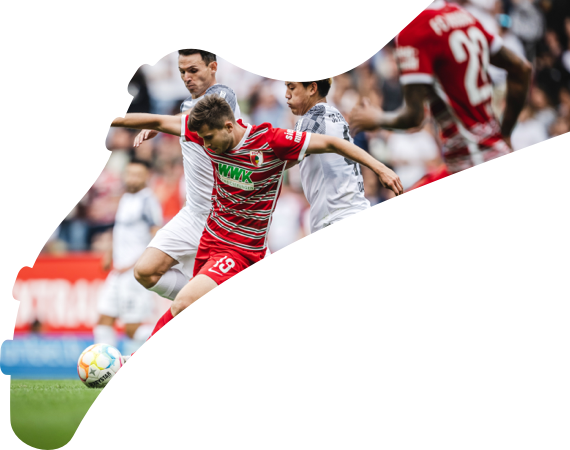
How will Germany line up at UEFA Euro 2020 this summer?
Thomas Müller and Mats Hummels have been recalled; Jamal Musiala has chosen Germany over England. With UEFA Euro 2020 upon us, bundesliga.com looks at how Joachim Löw's side could line up.
Löw will call time on his 15-year stint as Germany head coach at the conclusion of this year's competition. His former assistant Hansi Flick - who was in the dugout alongside him when Die Mannschaft won the FIFA World Cup in 2014 - is set to inherit the top job after leading Bayern Munich to seven trophies in 18 months.
Germany may have been drawn in the "Group of Death" alongside current world champions France and defending European champions Portugal - as well as Hungary - but Löw has given himself the best chance of bowing out on a high. His final 26-man squad is packed with a potent blend of youth and experience.
With Müller and Hummels back in the mix, Germany will feature five players who were world champions seven years ago, with Manuel Neuer, Toni Kroos and Matthias Ginter completing that quintet. Whilst they have 411 caps between them, the squad is rich with players in their primes: Serge Gnabry, Leon Goretzka, Joshua Kimmich and Niklas Süle were UEFA Champions League winners with Bayern last season; Kai Havertz, Antonio Rüdiger and Timo Werner with Chelsea this.
So how will Löw constitute such an embarrassment of footballing riches? Although his greatest successes with Germany have come with a four-man defence, the 61-year-old appears keen to implement a 3-4-3 formation, at least for some of the tournament. Despite a shock loss to North Macedonia using the system in March, he stuck with it in the most recent friendlies: a 1-1 draw with Denmark which Germany dominated before Yussuf Poulsen's late leveller, before a 7-1 thrashing of Latvia.
The three-man defence has its merits. Hummels remains perhaps the best quarter-back of a centre-back in world football, his 91 percent pass completion - astronomically high given how many long balls he attempts - helping Borussia Dortmund to Champions League qualification and DFB Cup glory in 2020/21. Hummels may not be the quickest, but the presence of Rüdiger, Ginter, or a fit Niklas Süle either side of him means he doesn't necessarily need to be.
Watch: Hummels under the tactical microscope

One area of the team that has looked relatively settled in 2021 is the front three, despite the different tactical set-ups behind it. Leroy Sane, Gnabry and Havertz started each of the three games prior to the Denmark friendly, the first two of which were World Cup qualifying victories over Iceland and Romania. Müller's return means one is likely to make way, though. Gnabry has a goal involvement every 82 minutes he has played for Germany while Havertz is in red-hot form having scored Chelsea's winner in the Champions League final, so Sane may have to settle for a place on the bench, at least initially.
Central midfield is hyper-competitive in either system, meanwhile. Ilkay Gündogan was Manchester City's 13-goal top scorer as they won England's Premier League this season; Kimmich has been tipped as a future World Footballer of the Year by Flick; Kroos has been the positional paragon for years, and Goretzka offers fantastic pace, power and verve from the centre. Kimmich broke onto the the scene as a force in European football as a right-back, and he could be restored there to allow for two of the other three to play, which is a central midfield selection which makes itself given Goretzka's thigh complaint.
Germany have other possibilities in terms of formation and personnel, though. Werner was a first-choice attacker for a long time, and his return of 15 goals and three assists in 38 international outings is not to be sniffed at. Chelsea's former RB Leipzig man may be most effective on the counter-attack with his lightning pace - expect to see him blooded against teams that want to attack rather than those, like Hungary, whose primary goal is likely to be damage minimalisation.
Löw has perhaps pinched a position at right-back. Paris Saint-Germain's Thilo Kehrer was a regular in UEFA Nations League Group A4 last year, but he hasn't made the cut. Ridle Baku, named in the Official Bundesliga Team of the Season as the league's best right-sider, is part of the Germany U21 squad who won the recent UEFA European U21 Championship in Hungary and Slovenia. But Kimmich is world class in both positions and Lukas Klostermann is there to cover, especially in a back four. It is also worth remembering that Süle and Emre Can can do a job as full-backs in a four.
At 18, Musiala is the youngest player in the squad by three years. Bayern's rising star racked up 23 youth international caps with England before pledging his allegiance to Germany in February. He is likely to be used as an impact sub in either system, but his six goals and an assist for Bayern this season - considering 19 of his 26 games were from the bench - suggests Löw shouldn't be shy to give him minutes.
Many eyeballs may be beginning to turn to Flick, and what Germany will go on to achieve under the new man. However, with some of the best players in the world in their ranks - young and old alike - and a coach with a point to prove, it might not be safe to bet against Die Mannschaft this summer, Group of Death or not.
Related news

Kiel shock Dortmund
The promoted side gave their survival hopes a massive boost with an impressive victory over BVB in the Matchday 17 opener!

Leverkusen continue pursuit of Bayern with narrow Mainz win
Alejandro Grimaldo's stunning free-kick was the difference as Leverkusen edged past Mainz to keep the pressure on leaders Bayern.

US Soccer Players in Germany: 2024/25 update
How did the likes of Joe Scally, Gio Reyna and Jordan fare in the latest round of Bundesliga fixtures?


